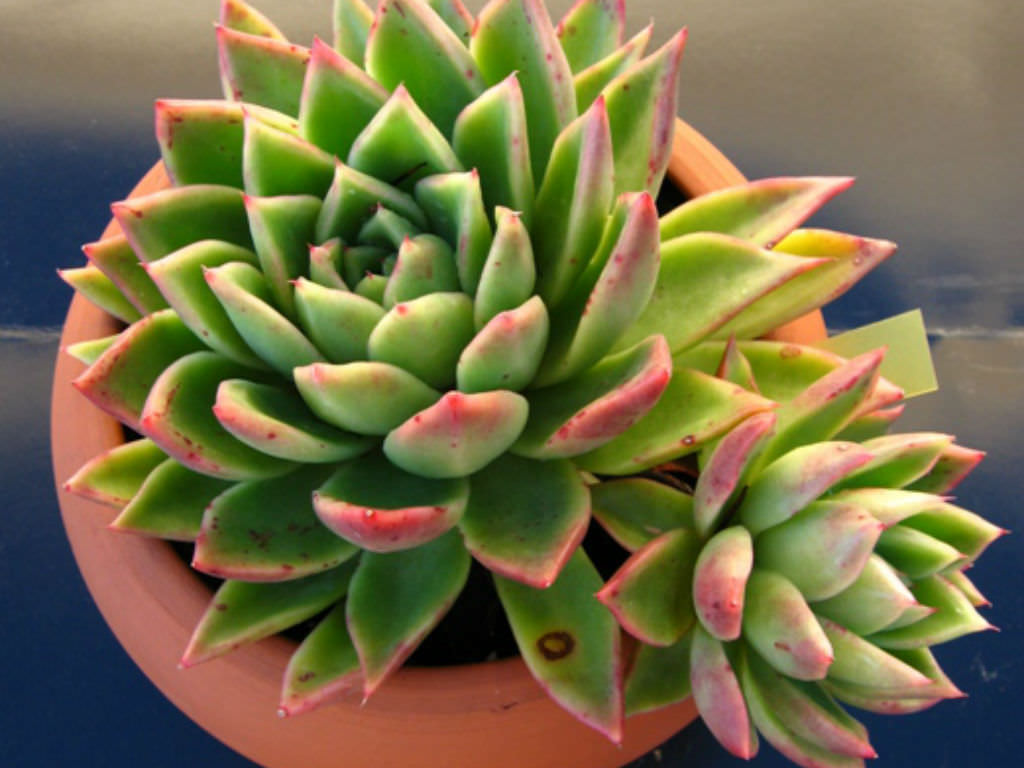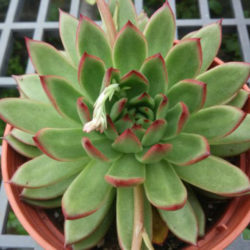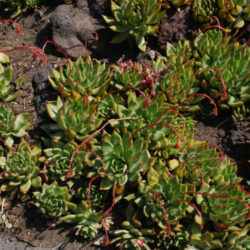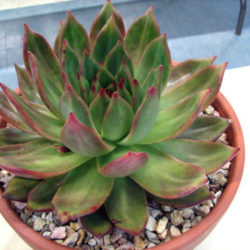Scientific Name
Echeveria agavoides 'Prolifera'
Common Name(s)
Carpet Echeveria
Synonym(s)
Echeveria agavoides var. prolifera, Echeveria agavoides 'Pink'
Scientific Classification
Family: Crassulaceae
Subfamily: Sempervivoideae
Tribe: Sedeae
Genus: Echeveria
Description
Echeveria agavoides 'Prolifera' is an attractive succulent plant that forms tight, stemless rosettes of fleshy apple-green leaves with a reddish-pink tinge near the edges and a darker red terminal spine. The rosettes are up to 10 inches (25 cm) in diameter, freely offsetting as they grow. Leaves are up to 4.8 inches (12 cm) long and 1.2 inches (3 cm) wide.
Flowers are urn-shaped, peach-red, capucine orange inside, and appear in sparse cymes on slender stalks in spring and early summer.
Origin
Echeveria agavoides 'Prolifera' is only known from cultivated plants from the garden of Christian Halbinger (fl. 1931), Mexico City. It is probably a hybrid of Echeveria agavoides.
Etymology
The cultivar epithet "prolifera" refers to the numerous proliferous offshoots emitted by each rosette.

Hardiness
USDA hardiness zones 9b to 11b: from 25 °F (−3.9 °C) to 50 °F (+10 °C).
How to Grow and Care
Most common Echeverias are not complicated succulents to grow, provided you follow a few basic rules. First, be careful never to let water sit in the rosette as it can cause rot or fungal diseases that will kill the plant. Additionally, remove dead leaves from the bottom of the plant as it grows. These dead leaves provide a haven for pests, and Echeverias are susceptible to mealy bugs. As with all succulents, careful watering habits and plenty of light will help ensure success.
Repot as needed, preferably during the warm season. To repot a succulent, ensure the soil is dry before repotting, then gently remove the pot. Knock away the old soil from the roots, removing any rotted or dead roots. Treat any cuts with a fungicide.
Most Echeverias can be easily propagated from leaf cuttings, although some are better from seeds or stem cuttings. To propagate a leaf cutting, place the individual leaf in potting soil for succulents and cover the dish until the new plant sprouts.
Learn more at How to Grow and Care for Echeveria.
Hybrids
Links
- Back to genus Echeveria
- Succupedia: Browse succulents by Scientific Name, Common Name, Genus, Family, USDA Hardiness Zone, Origin, or cacti by Genus
Photo Gallery
Click on a photo to see a larger version.



